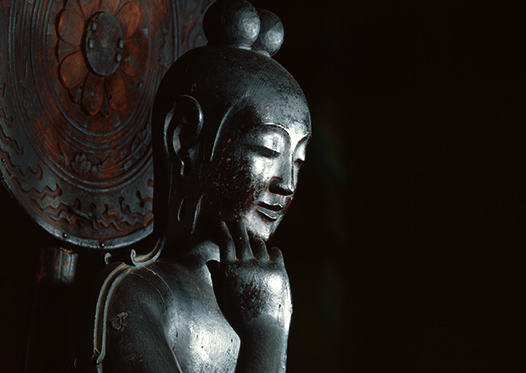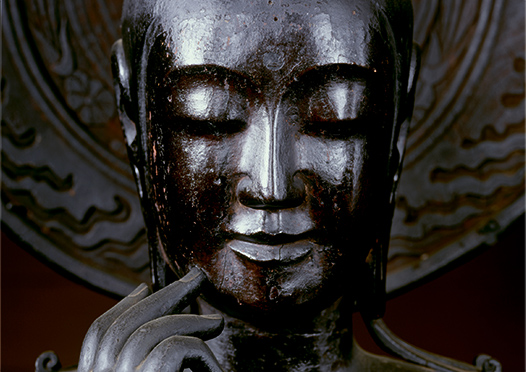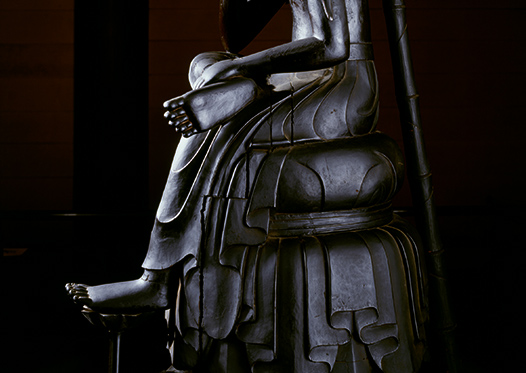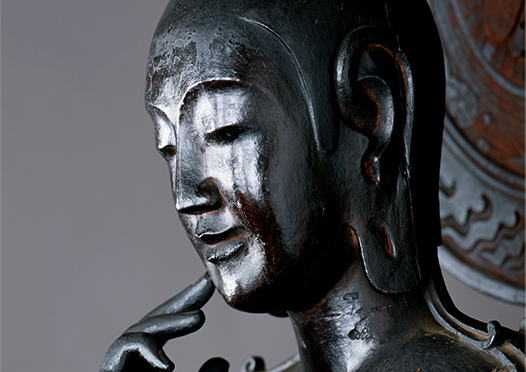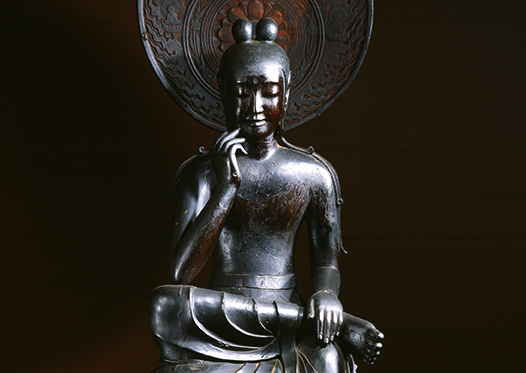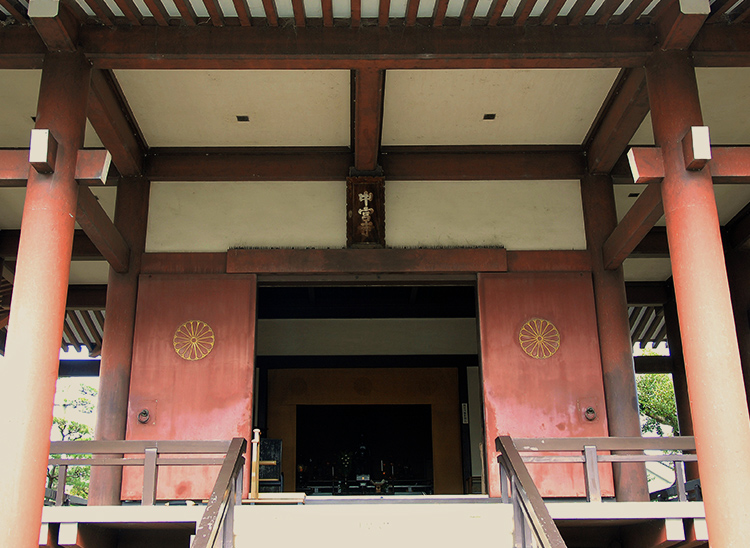Temple tradition says that Shotoku Taishi (574–622) had his mother Empress Anahobe no Hashihito in mind when he commissioned this elegant camphor-wood statue. Devotees have for centuries revered its contemplative expression and gentle, merciful gaze. In Buddhist lore, Kannon surveys the world looking for signs of suffering. The relaxed seated posture and the right hand delicately touching the cheek suggest that the bodhisattva is pondering how to remove suffering from the world. Experts have contrasted the tender look of this bodhisattva with that of another, rather more austere masterpiece of the Asuka period (593–710), that of Kuse Kannon in Horyuji Temple’s Yumedono.
The bodhisattva at Chuguji was once painted with a white pigment called gofun, made from heating and crushing the shells of clams and oysters, but the coloring has since faded away. Its ebony hue comes from centuries of exposure to smoke from incense, candles, and lanterns. The statue is a depiction of Nyoirin Kannon, one of six traditional forms of Kannon.
This bodhisattva is famous for its beautiful face and smile which could be compared with the smiles donned by the Sphinx and Leonardo da Vinci’s Mona Lisa. Flanking the statue is Yakushi Nyorai, the Buddha of medicine and healing, and Ashuku Nyorai, the Buddha of Wisdom.

